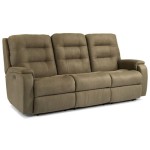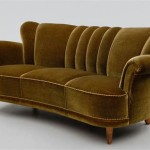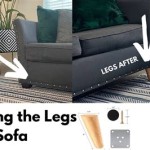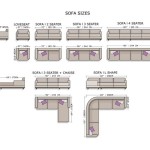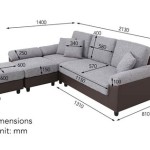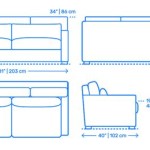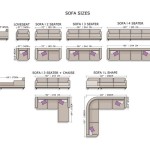Theatre Sectional Sofas: Maximizing Comfort and Style in Home Entertainment Spaces
Theatre sectional sofas represent a significant upgrade to the traditional home entertainment experience. These expansive seating arrangements are designed to replicate the comfort and luxury of a commercial movie theatre while allowing for customization and personalization within the home environment. The growing popularity of dedicated home theatres and multi-purpose living rooms that prioritize entertainment has fueled the demand for these versatile and comfortable furniture pieces.
Unlike standard sofas and loveseats, theatre sectionals are typically configured with multiple reclining sections, often incorporating features such as cup holders, storage consoles, and integrated charging ports. This design caters specifically to the needs of individuals and families who enjoy extended periods of relaxation while watching movies, playing video games, or simply spending time together. The modular nature of many theatre sectionals also allows for flexibility in arrangement, adapting to different room sizes and spatial requirements.
The selection of a theatre sectional involves considering various factors, including the size and layout of the room, the desired seating capacity, the preferred upholstery material, and the available budget. An informed decision requires a thorough understanding of the different types of theatre sectionals available and the specific features that contribute to overall comfort and functionality.
Understanding the Key Features of Theatre Sectional Sofas
The defining characteristics of a theatre sectional sofa extend beyond mere size and configuration. Several key features contribute to the enhanced comfort and functionality that these seating arrangements offer. These features directly impact the user experience and should be carefully evaluated during the selection process.
Reclining mechanisms are arguably the most crucial element. Theatre sectionals are commonly equipped with manual or power reclining options. Manual recliners typically rely on a lever or handle to activate the reclining function, offering a more budget-friendly option. Power recliners, on the other hand, employ electric motors to provide smooth and effortless reclining, often with the added benefit of adjustable headrests and lumbar support. The choice between manual and power reclining depends on personal preference, budget considerations, and the desired level of convenience.
Integrated storage is another valuable feature. Many theatre sectionals incorporate storage consoles within the armrests or center sections. These consoles provide convenient storage for remote controls, snacks, magazines, and other items, helping to keep the entertainment area organized and clutter-free. Some models even include refrigerated cup holders or built-in reading lights, further enhancing the comfort and convenience of the seating arrangement.
Upholstery material plays a significant role in both the aesthetic appeal and the durability of the theatre sectional. Leather is a popular choice for its luxurious look and feel, as well as its resistance to wear and tear. However, leather can be more expensive than other options and may require specialized cleaning and maintenance. Fabric upholstery, such as microfiber or polyester, offers a more affordable alternative and is often more resistant to stains and spills. The choice of upholstery should consider the level of usage, the presence of children or pets, and the desired aesthetic for the home theatre.
Choosing the Right Size and Configuration
Determining the appropriate size and configuration of a theatre sectional is essential for maximizing comfort and optimizing the use of space within the home entertainment area. A sectional that is too large can overwhelm a smaller room, while a sectional that is too small may not provide adequate seating for all occupants.
Room dimensions are the primary factor to consider. Before purchasing a theatre sectional, it is crucial to measure the available space and create a floor plan to visualize how the sectional will fit within the room. Allow ample space for walkways and avoid blocking doorways or windows. Consider the placement of other furniture, such as coffee tables and entertainment consoles, to ensure that the sectional complements the overall layout.
Seating capacity is another important consideration. Determine the number of individuals who will typically be using the theatre sectional. Consider whether the sectional will primarily be used by family members or whether it will also be used to accommodate guests. Choose a sectional that provides adequate seating for the anticipated number of occupants without overcrowding the space.
Modular designs offer flexibility in configuration. Many theatre sectionals are designed with modular components that can be arranged in various configurations to suit different room layouts and seating preferences. These components can include individual reclining seats, armless chairs, consoles, and corner wedges. Modular sectionals allow for customization and can be easily reconfigured to adapt to changing needs.
Exploring Different Styles and Upholstery Options
Theatre sectional sofas are available in a wide range of styles and upholstery options to complement various interior design aesthetics. From sleek and modern designs to more traditional and ornate styles, there is a theatre sectional to suit virtually any taste. The choice of style and upholstery should reflect the overall design of the home entertainment area and the personal preferences of the occupants.
Contemporary styles often feature clean lines, minimalist designs, and neutral color palettes. These sectionals typically incorporate leather or microfiber upholstery and may include features such as LED lighting and built-in sound systems. Contemporary theatre sectionals are ideal for modern homes with a focus on clean and uncluttered aesthetics.
Traditional styles, on the other hand, often feature more intricate detailing, rolled arms, and plush cushions. These sectionals may incorporate leather or fabric upholstery with classic patterns and textures. Traditional theatre sectionals are well-suited for homes with a more formal and elegant design aesthetic.
Upholstery options encompass a wide variety of materials, each with its own unique characteristics and benefits. Leather is a durable and luxurious option that is resistant to wear and tear. However, leather can be more expensive and may require specialized cleaning. Fabric upholstery, such as microfiber, polyester, and velvet, offers a more affordable and versatile alternative. Fabric upholstery is often more resistant to stains and spills and is available in a wide range of colors and patterns. The choice of upholstery should consider the level of usage, the presence of children or pets, and the desired aesthetic for the home theatre.
Beyond these core elements, consider the arm style (rolled, track, pillow), the leg style (exposed wood, hidden), and any decorative stitching or tufting details. All of these factors contribute to the overall look and feel of the theatre sectional.
Ultimately, the selection of a theatre sectional sofa is a personal decision that should be based on individual needs, preferences, and budget. By carefully considering the key features, size and configuration, and style and upholstery options, individuals can create a comfortable and stylish home entertainment space that enhances their viewing experience.

Octane Seating Sectional Collections

Home Theater Sectionals Room Sectional Sofas

Theater Room Couch Ideas On Foter Home Cinema Rooms Seating

Octane Flex Hr Home Theater Sectional Grey Leather Power Headrests

Home Theater Sectionals Room Sectional Sofas Seatup Com

Bartow Home Theater Sectional Sofa Kfrooms Nailhead

Octane Flex Hr Power Black Sectional Tables Storage Charging Seatup Com
Alameda Fabric Power Reclining Home Theater Sectional Costco

Get Comfy With Large Sectionals Oversized Home Theater

Latitude Run Theater Sectional Home Seating Cinema Room Rooms

